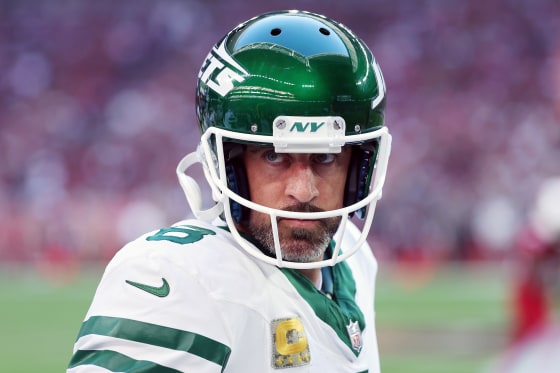
The New York Jets, 2-3 through five weeks, could have looked at the glass as half full.
In a 10-9 loss to the Denver Broncos in Week 4, New York missed a potential game-winning field goal late in the fourth quarter. And against the Minnesota Vikings the following week, the Jets were driving for a potential game-winning score until Aaron Rodgers threw an interception, his third of the game, to fall 23-17.
An optimist would say that New York was under .500 but that its last two losses had come by a combined seven points. It was a field goal away from being 3-2. One fewer bad throw away from somehow being 4-1. And despite their 2-3 record, the Jets entered Week 6 only one game behind the Buffalo Bills for the lead in the AFC East.

In the five games since they fired Saleh, the Jets are only 1-4. And their season reached a new low in Week 10, as the Arizona Cardinals dominated them in all three phases of the game for a 31-6 win.
Where has the Jets’ season gone wrong? It starts with Rodgers.
Rodgers, 40, who played only four snaps last season before he tore an Achilles tendon, has looked like a shell of the player he used to be. A four-time MVP and Super Bowl champion, Rodgers has been unable to capture his past form in New York.
Starting with when he became a full-time starter in 2008 (and excluding his four-play-long 2023 campaign), Rodgers’ current passer rating of 86.8 would be the lowest of his career, as is his average yards per attempt. He hasn’t thrown for 300 yards in a single game. His completion percentage is his third worst. And he has thrown seven interceptions in 10 games. (For context, he didn’t throw more than eight in a single season from 2011 to 2021.)
Surrounding Rodgers with familiar faces hasn’t helped.
Offensive coordinator Nathaniel Hackett, who worked with him in Green Bay from 2019 to 2021, was stripped of his play-calling duties after Saleh was fired.

